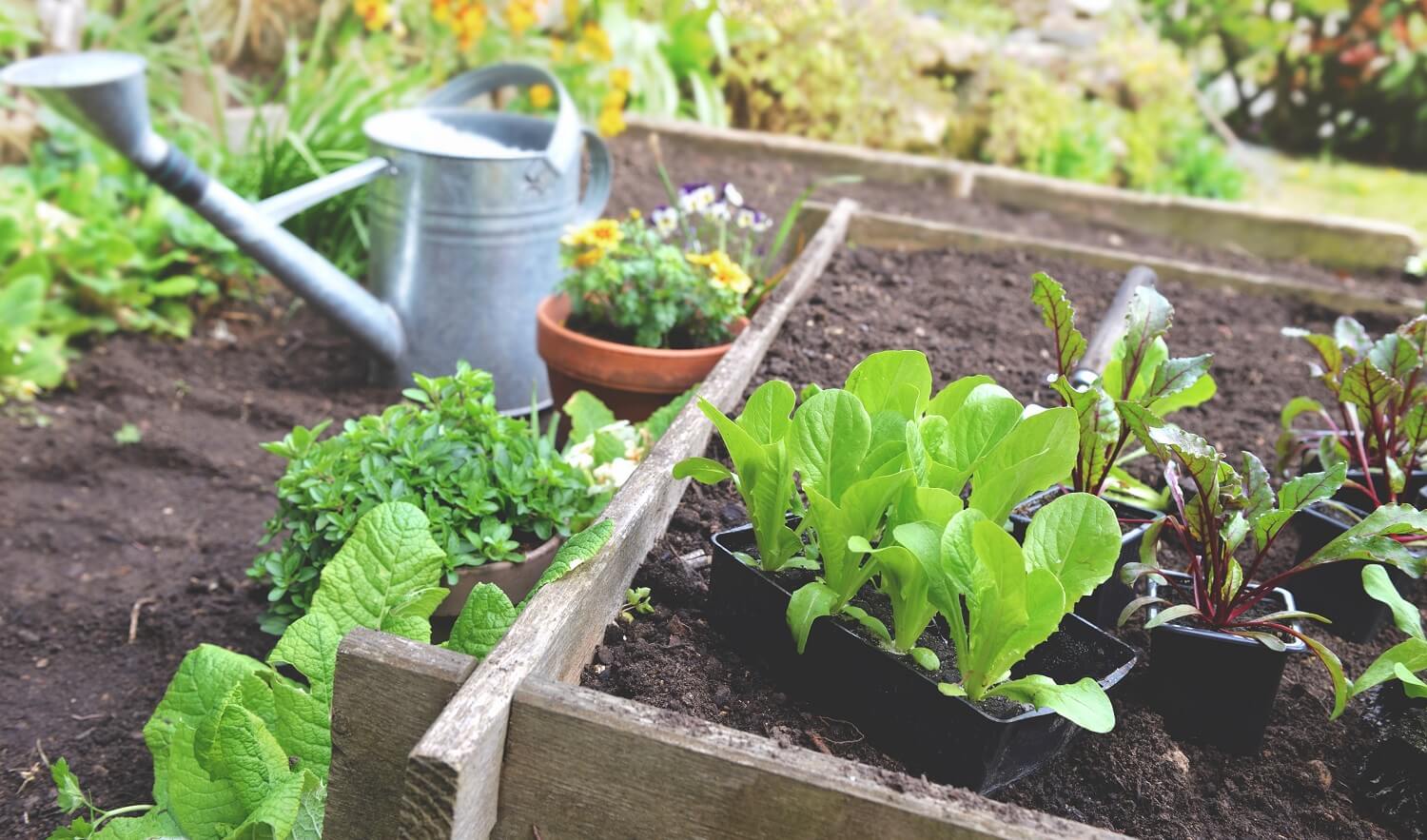Did you know that companion planting with beets is possible and that there’re various beets companion plants that you can consider for your garden?
Beets are cool-season root vegetable plants with leafy greens and fleshy roots when fully matured. They are easy-to-grow vegetables that are highly nutritious and are good for your health.
For this reason, it’s important to ensure healthy beet plants so that you have a bountiful harvest at the end of the season. You can achieve this through companion planting.
This article is about companion planting with beets and touches on different crops you can grow together with beets and which ones to avoid.
First and foremost, let’s look at what companion planting is and its benefits.
What’s Companion Planting?
Companion planting is a farming method in which a gardener grows/combines two or more different crops for the mutual benefit of one or all plants.
Why Companion Planting? /Benefits of companion Planting (in general)
- Companion planting helps manage insects and pests
- It also helps in attracting beneficial insects
- Plays an important role in improving the soil nutrients
- Ensures a plentiful harvest/increases yield
- Enhances efficient utilization of space
- Provides ground cover to otherwise taller companions
- Fastens growth and improves taste
- Provides shade for the shorter companions
Now that you have a clear picture of what companion planting is and its benefits, let’s take a look at the best beets companion plants that’re worth considering.
We’ll also be looking at what not to plant with beets/worst beets companion plants.
So, without much ado, let’s get started!
Types of Beets Companion Plants
Radishes (Raphanus raphanistrum subsp. Sativus)
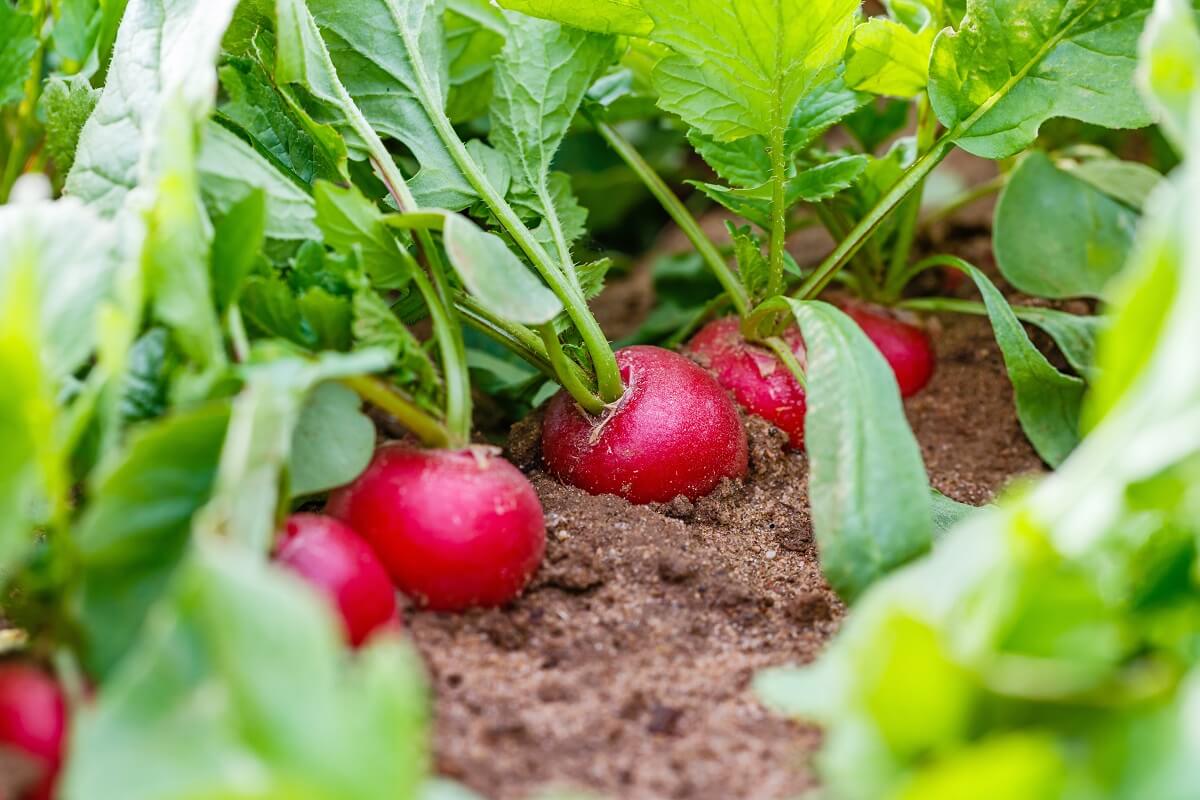
Radishes are edible root vegetables domesticated in Asia before the Roman times.
They belong to the Brassicaceae family just like cabbage, kales, cauliflower, collards, and broccoli among others.
These annual vegetables are mostly eaten raw as they add a crunchy and peppery taste to any dish. You can also cook their young leaves the same way as spinach.
Just like beets, radishes are cool-season crops and hence a great companion for your beets.
Furthermore, radishes are fast-growing root vegetables and this works to the benefit of your beets. As such, when you sow beets and radishes at the same time, the radishes will emerge first.
This gives you enough time for thorough weeding without causing any disturbance to the beets that’re yet to germinate.
In addition to this, radishes are fast-growing vegetables thus, allows you to harvest them first giving you a second crop. Also, this gives your beets an extra space for growth as well as loosens and improves drainage. Hence, improved crop performance.
High Fragrance Herbs
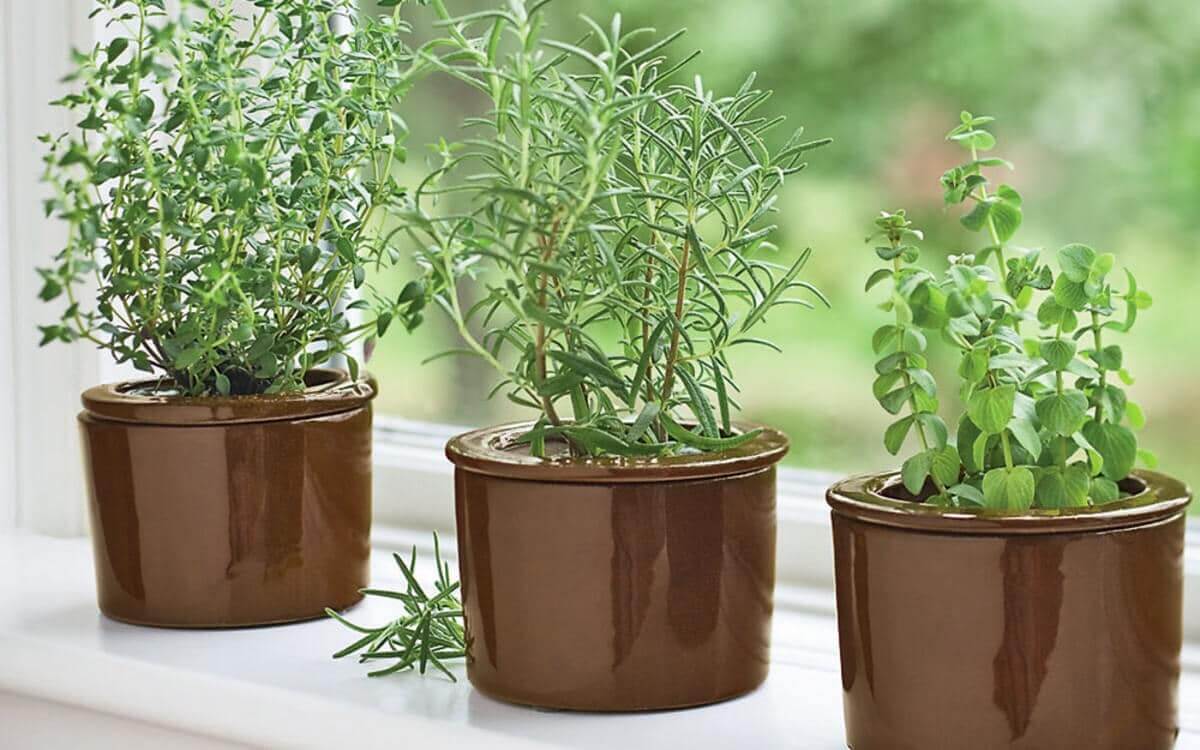
Most aromatic herbs are good beets companion plants. These include catnip, rosemary, mint, hyssop as well as thyme. The strong pungent from these herbs usually helps to repel harmful insect pests from your beets.
Catnip, for example, is a potent pest repellent to several harmful insect pests such as Japanese beetles, flea beetles, aphids, Colorado potato beetles, and squash bugs. It’s also great at repelling mice and voles.
However, catnip can grow out of control when its seeds spread so, grow beets strategically in the herb garden rather than introducing the catnip into your vegetable garden. This way, your vegetable garden won’t be invaded by the herb.
Alternatively, introduce the container-grown catnip (it’s easy to control their growth) into the vegetable garden.
Just like catnip, mint is also another good companion plant for beets and several other plants including; tomatoes and peppers.
Mint, regardless of the variety can drive away any unwanted insects/pests that might harm your beets. Even with just shredding the mint’s leaves and spreading them on the ground, the pests won’t dare to get to your beet plants.
But, a more sustainable way of doing this is to grow the mint plant. Nevertheless, mint plants can spread aggressively and take over your vegetable garden very fast.
So, if you feel it might be difficult to control its spread, grow the mint in pots whereby you can move them around the garden for effective pest control.
Alliums/Onion Family
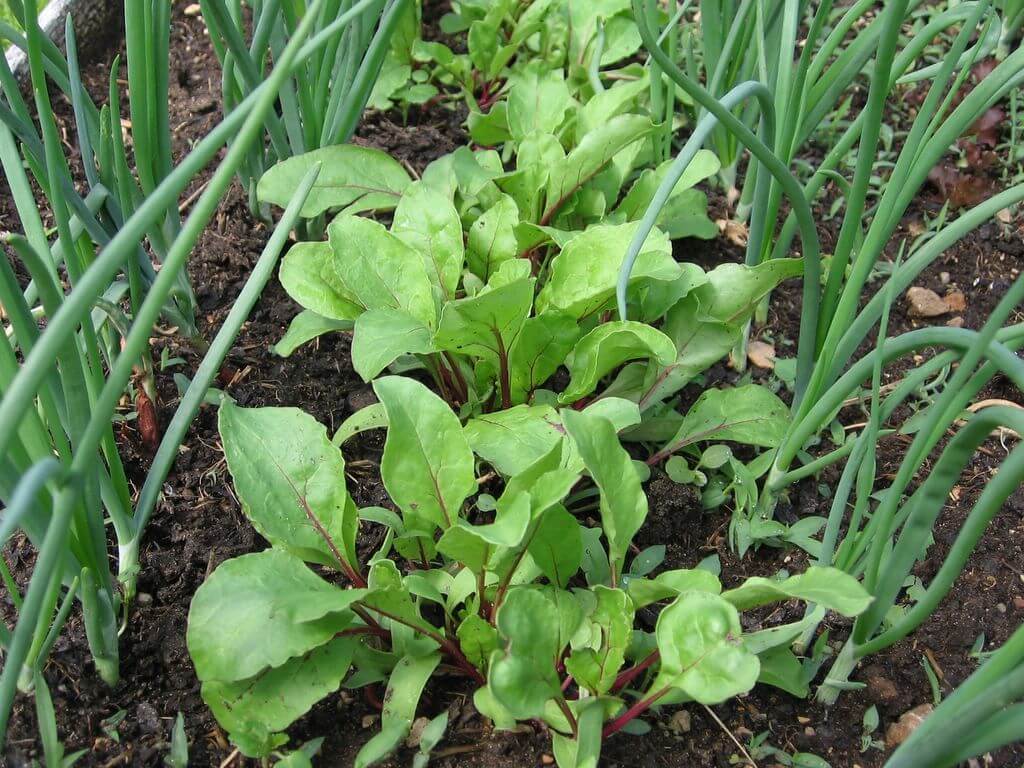
All members of the Allium family are good companions to beets. The plants in this group include; leeks, shallots, garlic, chives, scallions, and, bulb onions.
These plants are also referred to as ‘the stinking lilies’ due to their pungent smell. The odor helps in repelling harmful critters such as sugar beet flea beetles and aphids.
Also, if you experience problems with mammals such as gophers, deer, rabbits and, groundhogs damaging your beets, try growing the alliums like onions alongside the beets.
They will naturally drive the harmful mammals away from your beets.
And if you or some of your family members are ‘picky eaters’ or, the smell of the beets isn’t enticing to them (due to the presence of a compound known as compound geosmin), grow your beets with garlic.
Using garlic as beets' companion plants helps in improving the beets’ flavor.
In addition to this, as the garlic grows, they release sulfur into the soil. The sulfur acts as a natural anti-fungal agent and protects the beets from fungal infections.
Lettuce
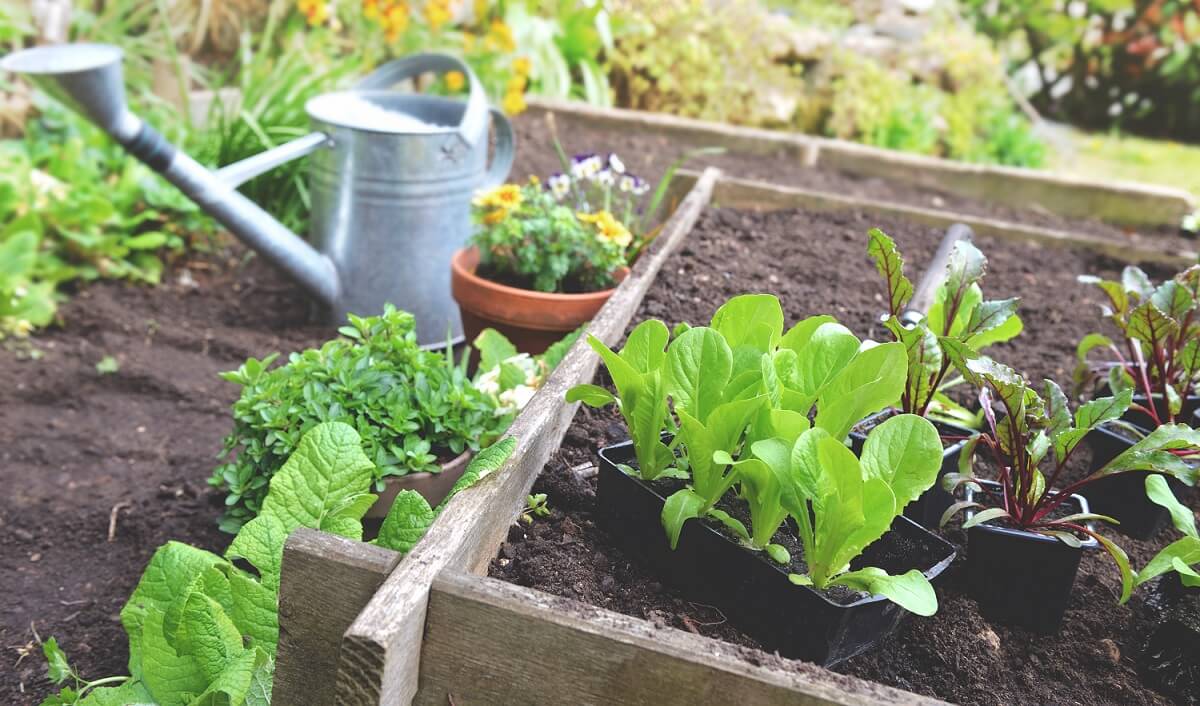
Lettuce has shallower roots compared to beets, therefore, occupies a different soil layer than the beets do. Growing these two crops together thus improves each other’s performance.
Since the root systems for these two crops are different, there is no competition for nutrients or, crop failure. The lettuce will use the nutrients from near the soil surface while the beets take the nutrients from the layers deeper.
Apart from this, lettuce has broad and dense foliage that helps in suppressing weeds. It’s also an effective groundcover and provides shade against the strong sun thereby, improving the soil’s moisture retention.
This saves you time that you’d otherwise have used for watering your plants.
Bush Beans
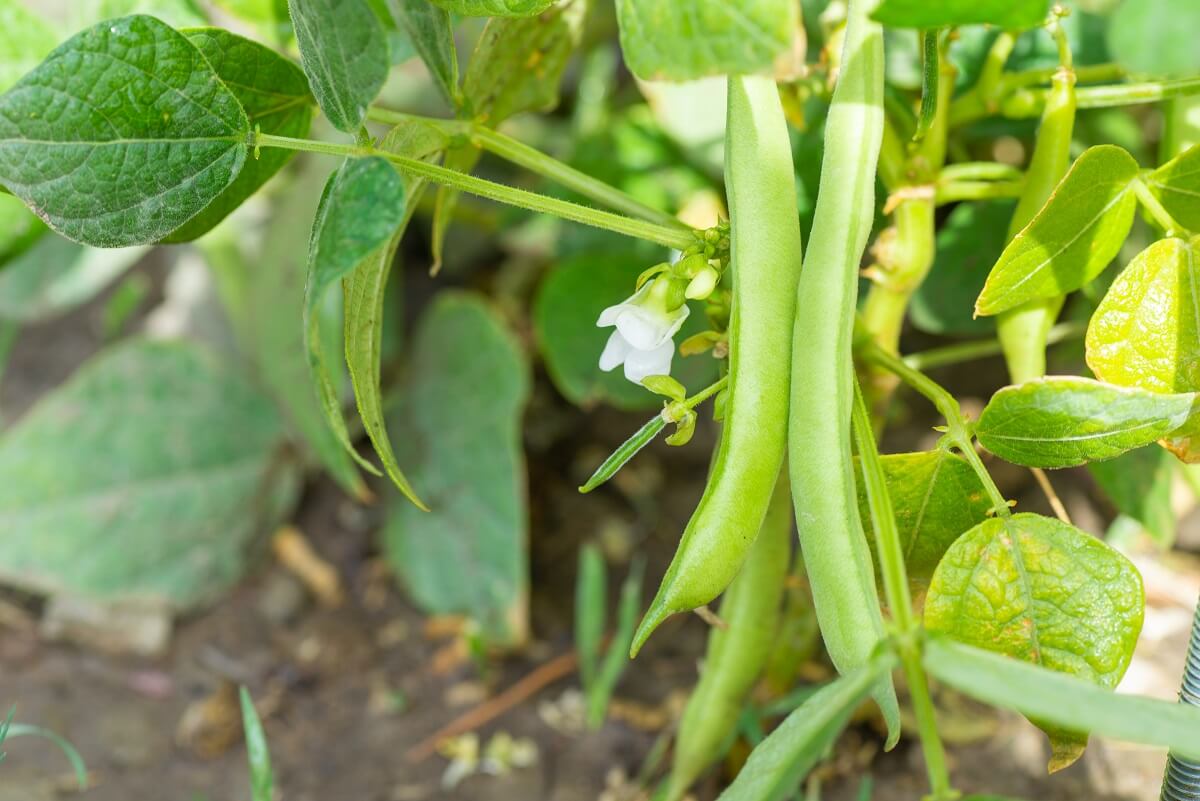
Legumes such as butter beans, soybeans, and bush beans thrive best when growing next to beets. And as they flourish, the beans enrich the soil with the right amounts of nutrients and nitrogen through nitrogen fixation.
These legumes absorb nitrogen from the atmosphere and convert it into forms that can be easily absorbed by the beets (ammonium nitrate and nitrite forms). Hence stimulates the growth and development of the beets.
Pro Tip: Never grow pole beans near beets as they stunt each other’s growth. Plus, your beets end up with large tops and tiny beetroots due to excess nitrogen from the pole beans.
Brassicas
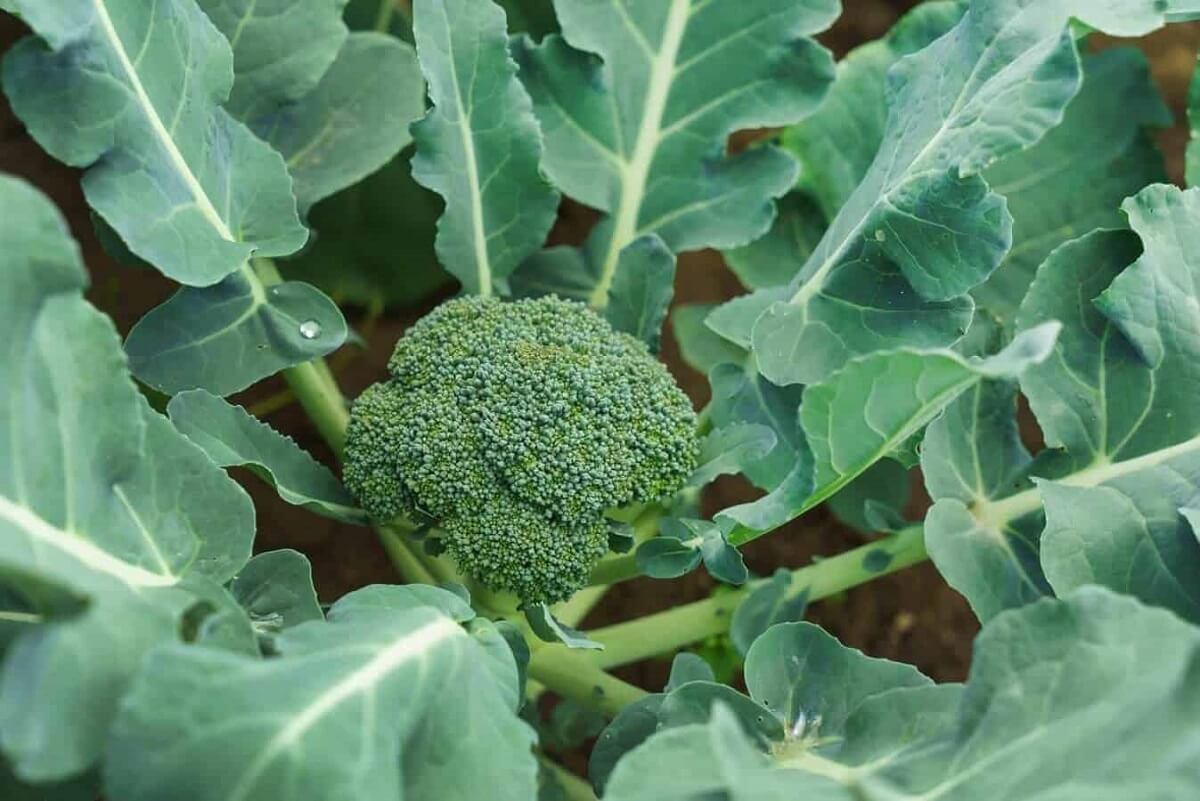
Growing beets alongside brassicas such as cabbages, kales, cauliflower, broccoli, and, Brussel sprouts among others helps enrich the soil thereby improving the growth and quality of the plants.
Once the beet leaves fall, you can till them back into the soil and since they are high in iron and manganese, they’ll boost the growth of your brassicas.
Although brassicas are generally good companion plants for beets, you should however avoid growing filed mustard next to beets as it leads to poor beet growth.
What Not to Plant with Beets
Swiss Chard
Beets and chard belong to the same family and as such, they share similar growing requirements but, you can never grow them together.
Why am I advising against growing these crops together leave alone following each other in a rotation?
This is because they share the same pests and diseases that can pass to each other. Again, they might compete for nutrients which might result in poor quality yields.
Pole Beans
As I mentioned earlier, beans are a good choice for companion planting with beets. However, you should avoid growing pole beans together with beets.
They’re the worst beet companion plants as they lead to stunted growth.
Apart from this, pole beans fix more nitrogen in the soil than bush beans do. This often results in the over-production of lush, leafy foliage at the expense of roots.
Fennel
Even though fennel is good at attracting beneficial bugs into your garden, it is however a poor companion plant to beets and most vegetables and herbs.
Growing it in the same vicinity as beets can stunt or even kill your beets.
Conclusion
Those have been some of the best beets companion plants.
Regardless of the type of beets, you have in your garden, companion planting is the convenient way to go!
This practice not only creates a symbiotic relationship between the plants in your garden but, also protects the soil from being stripped of the nutrients.
Moreover, it protects the soil and plants from pest and disease attacks.
So, no matter the part of the beet you love, (be it the greens, the roots, or, the whole beet plant), grow yours alongside other beneficial plants for improved harvest and flavor.
